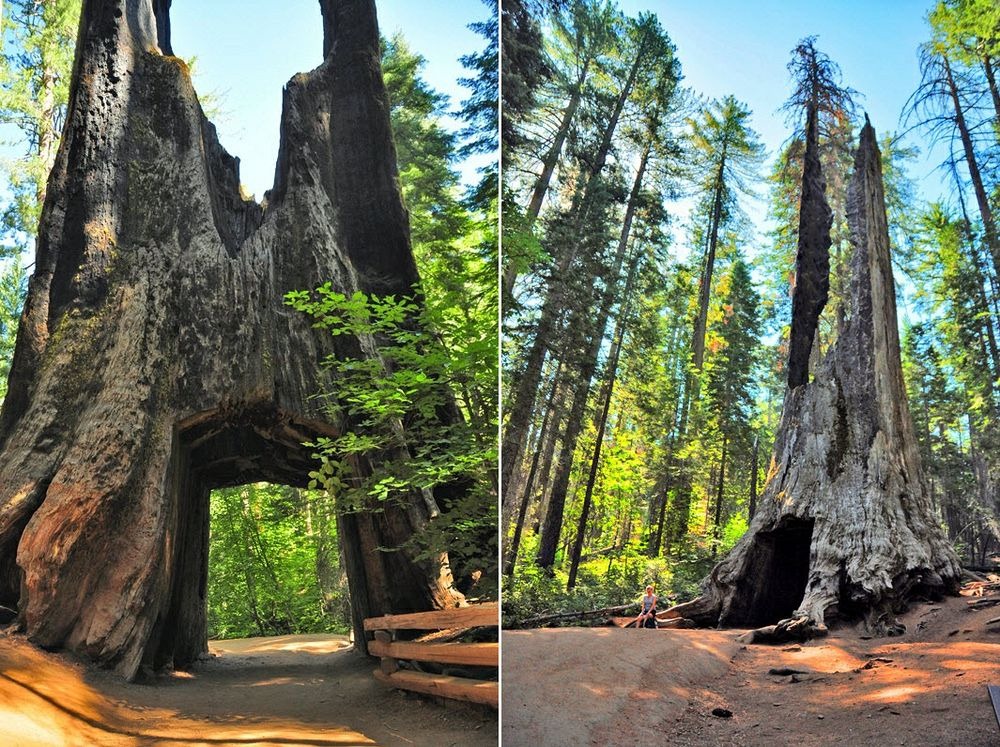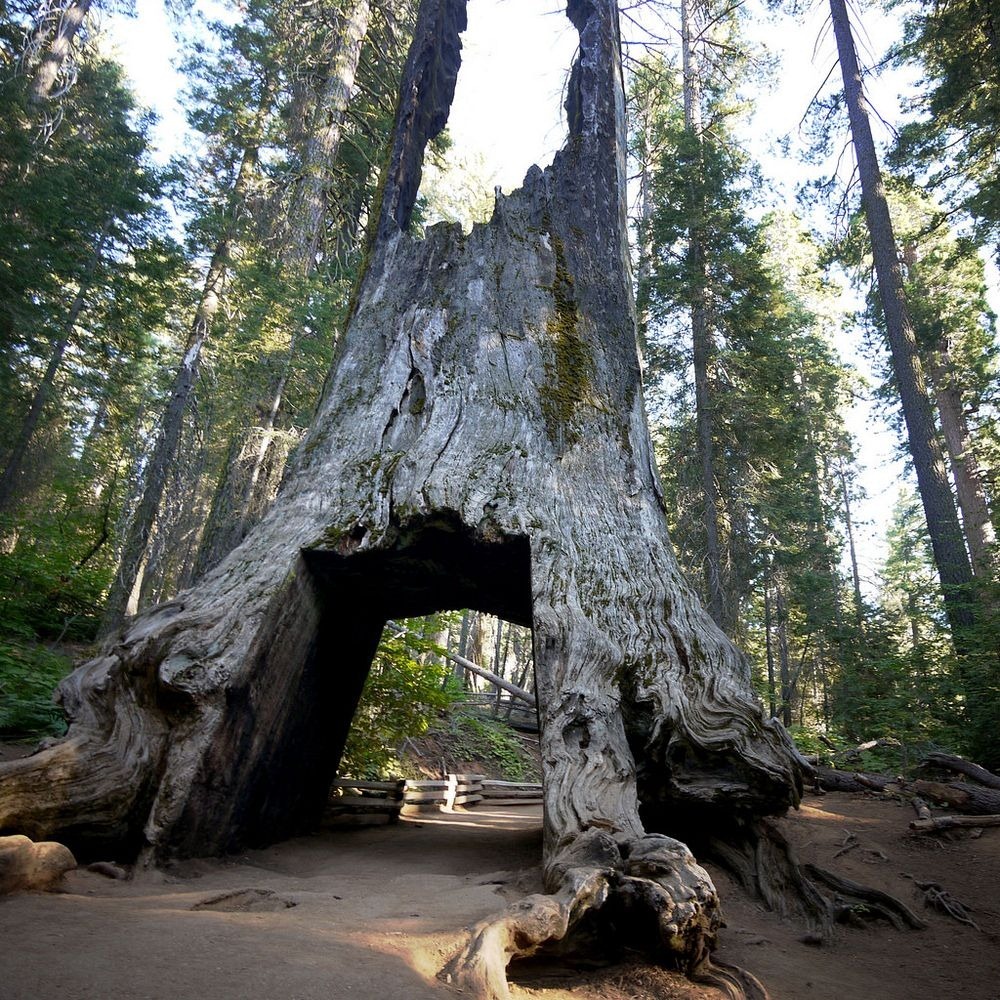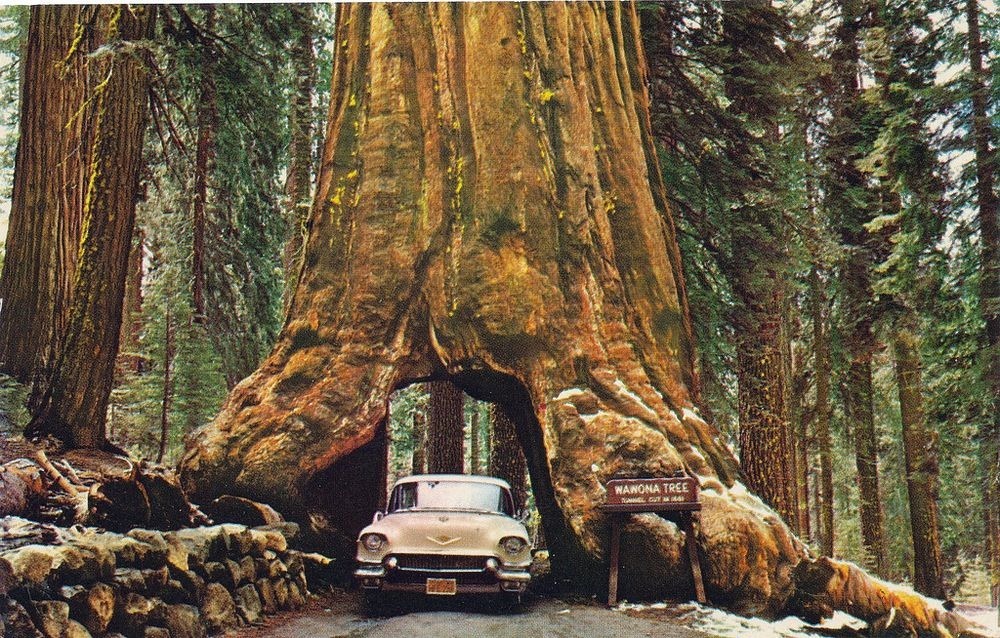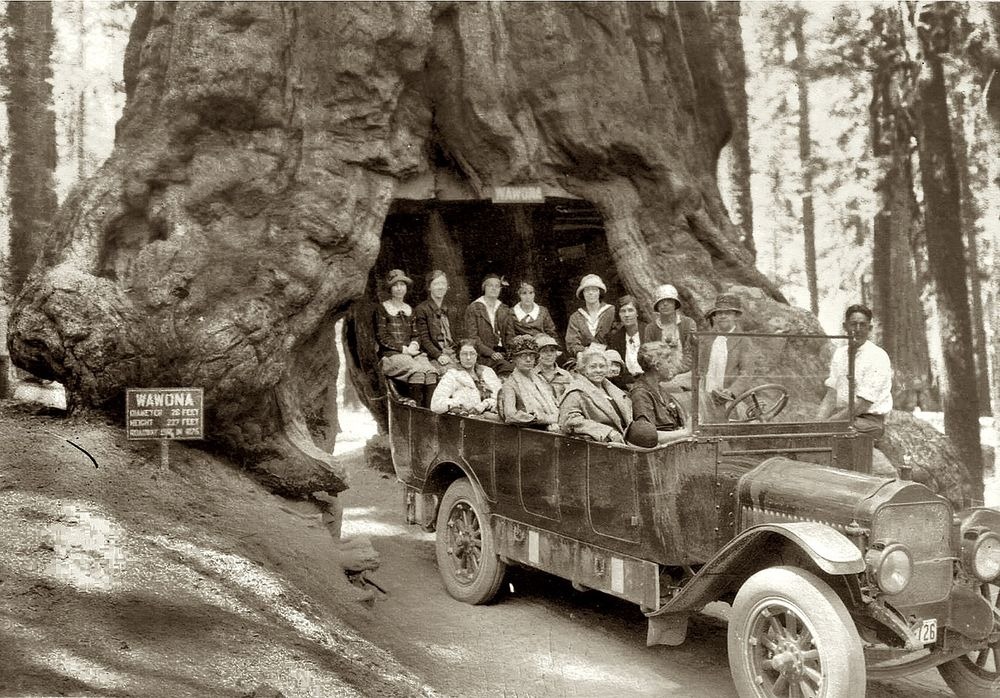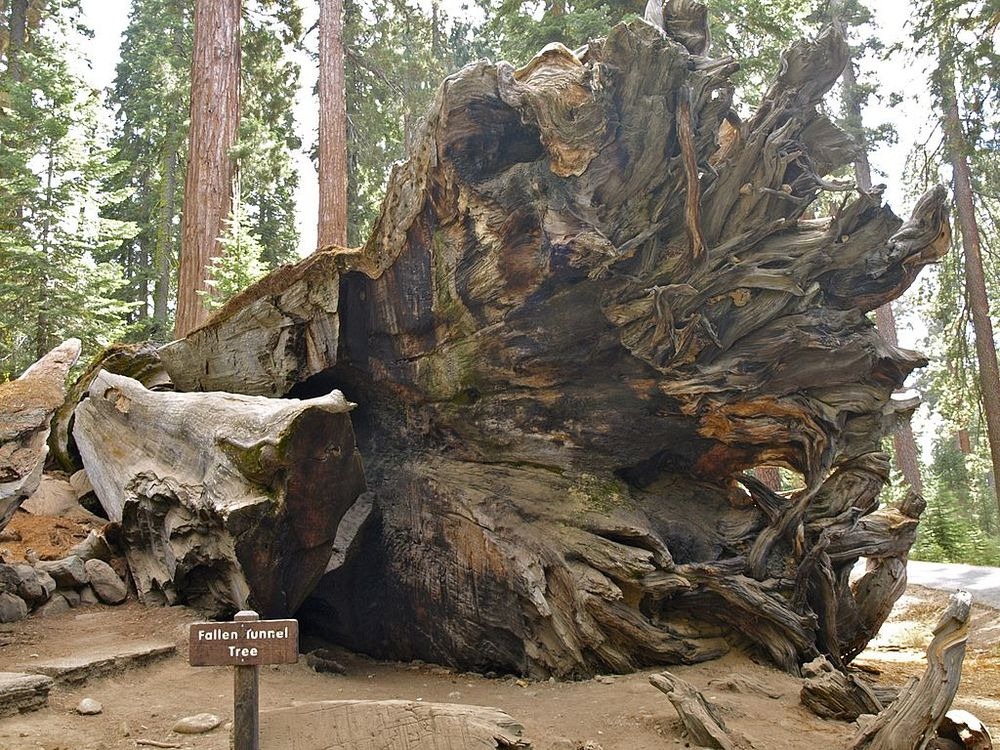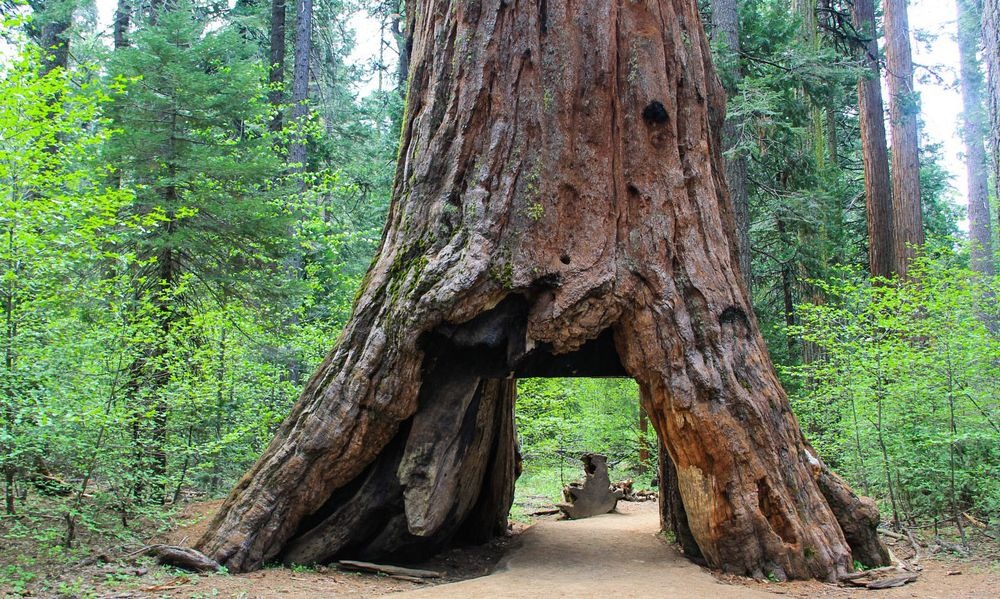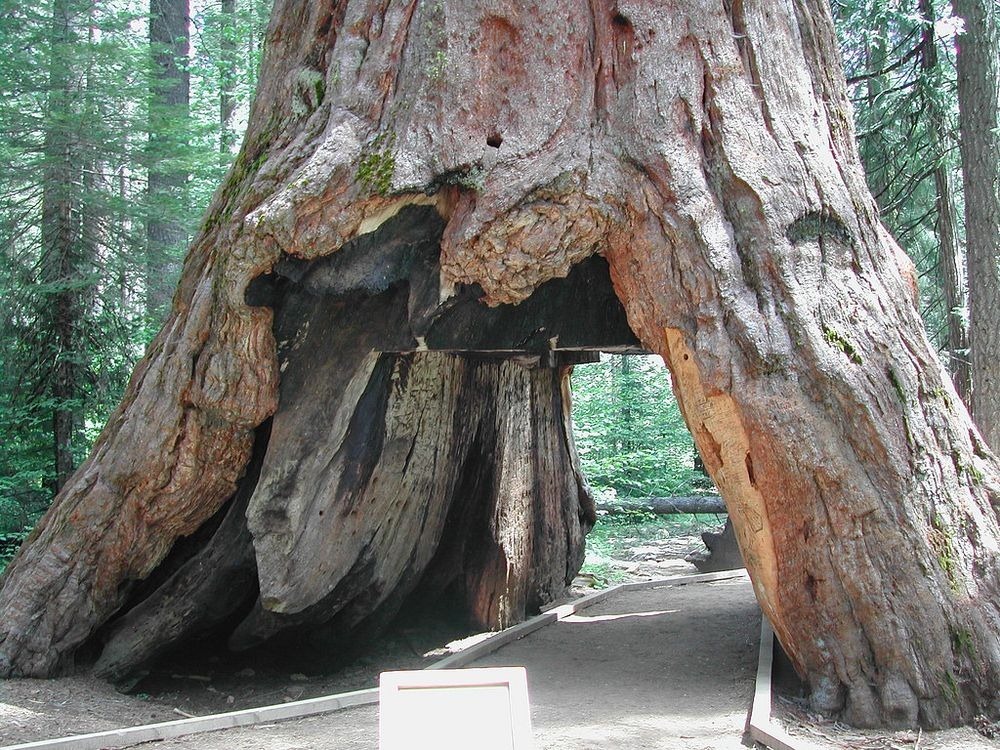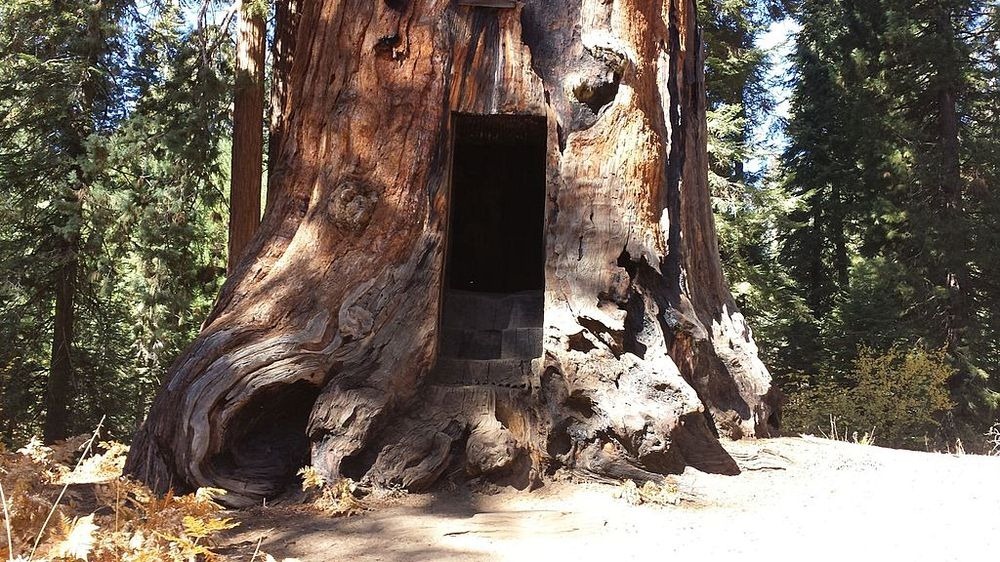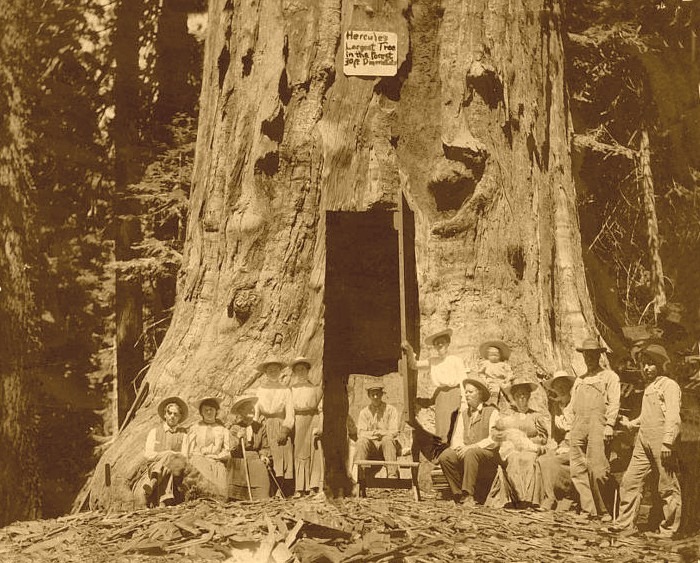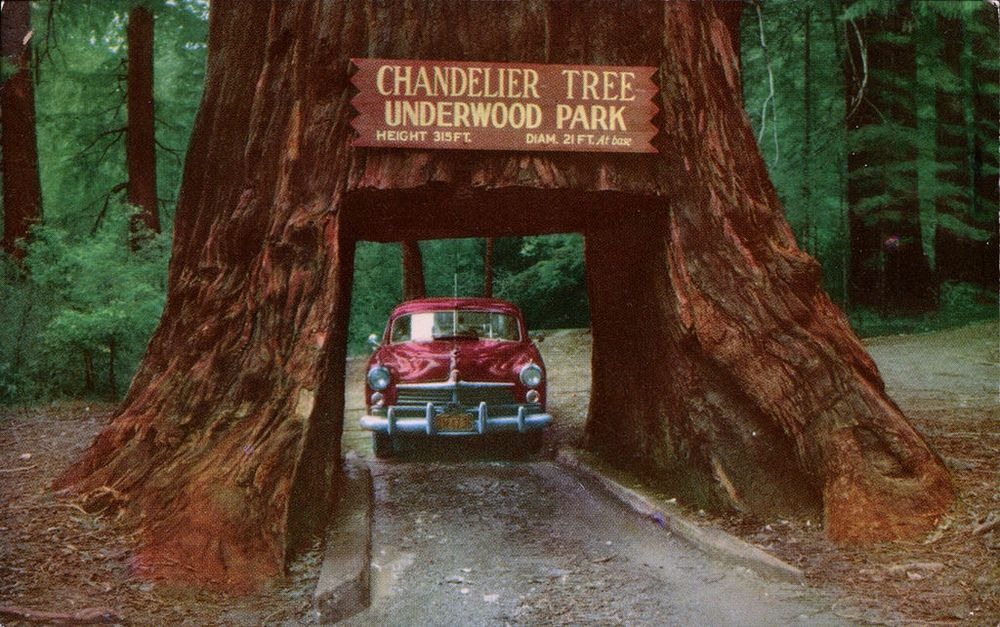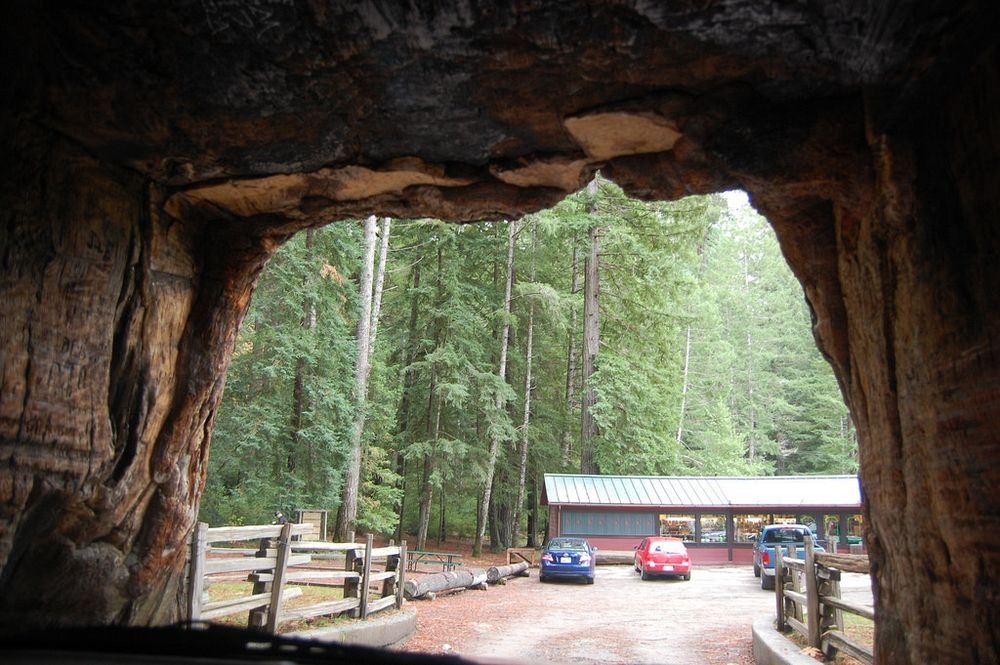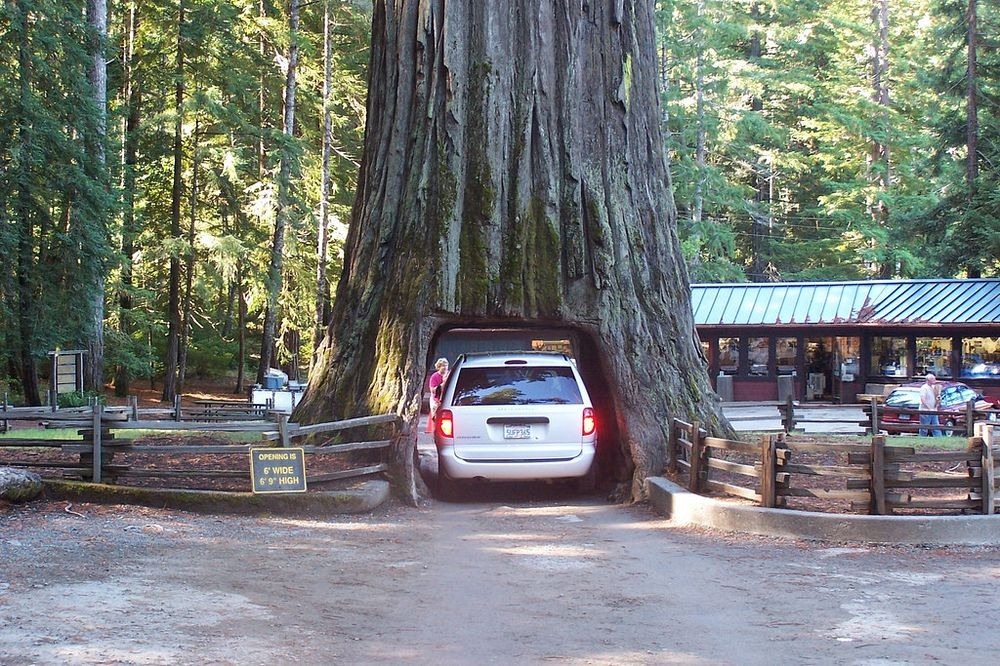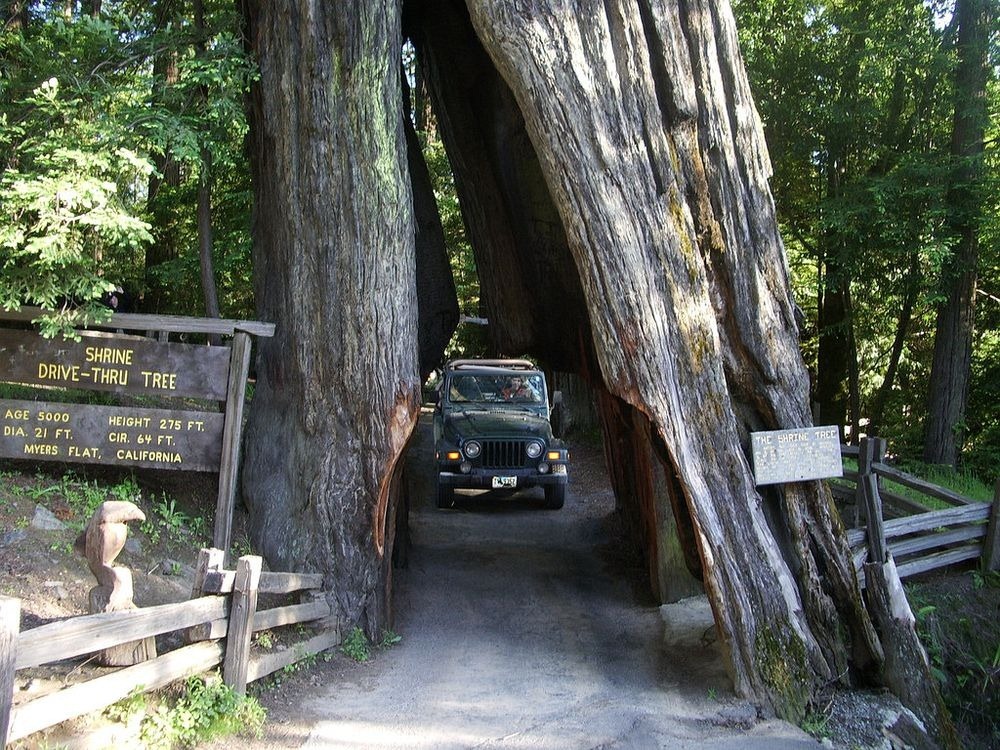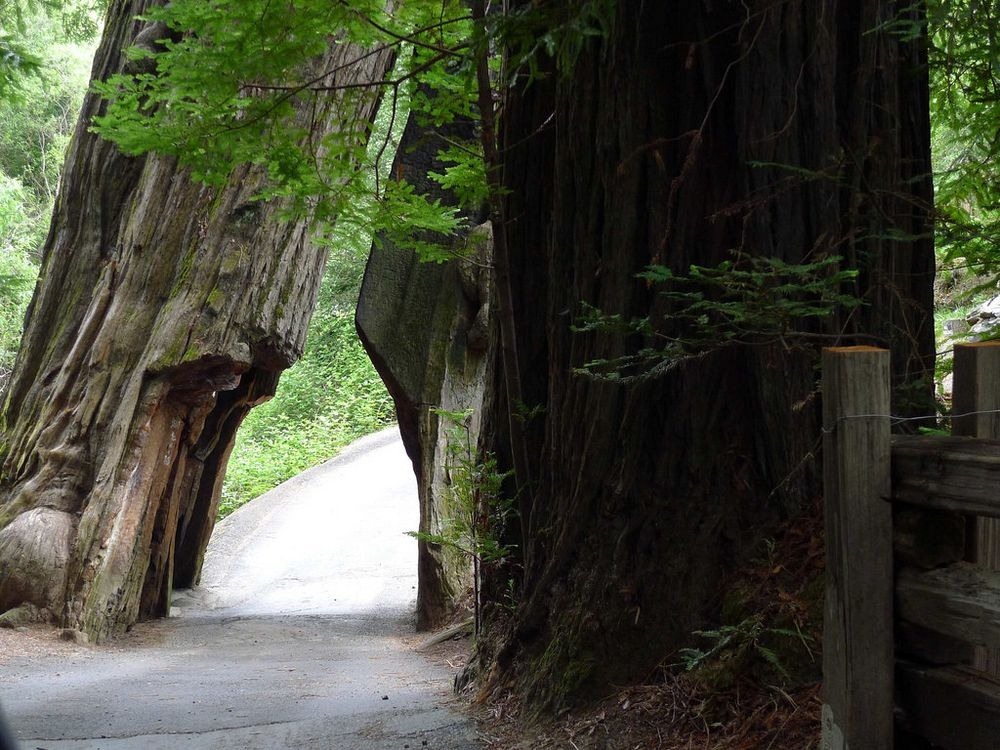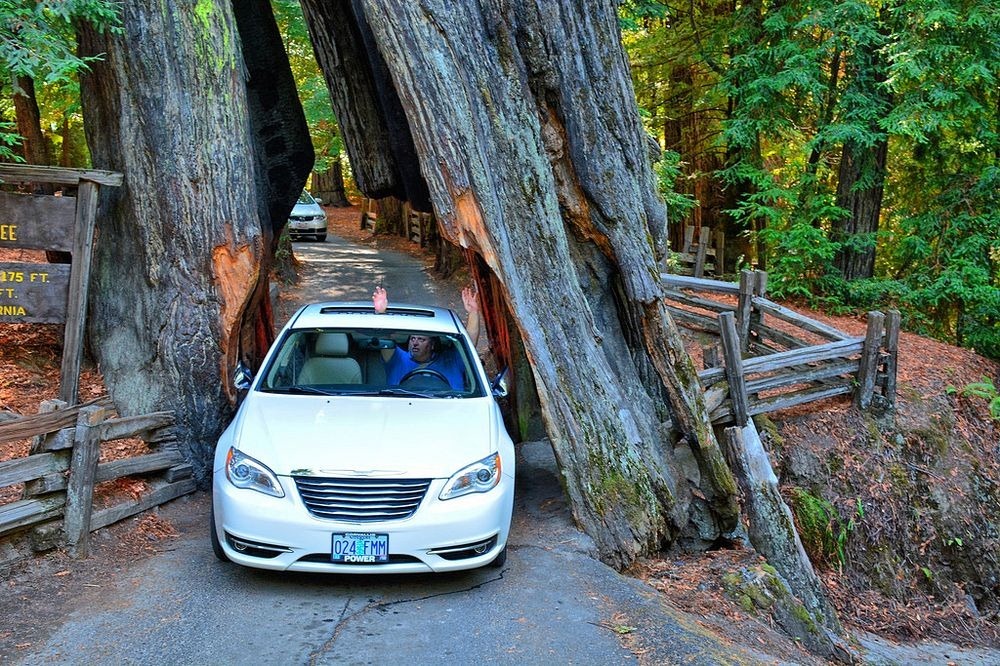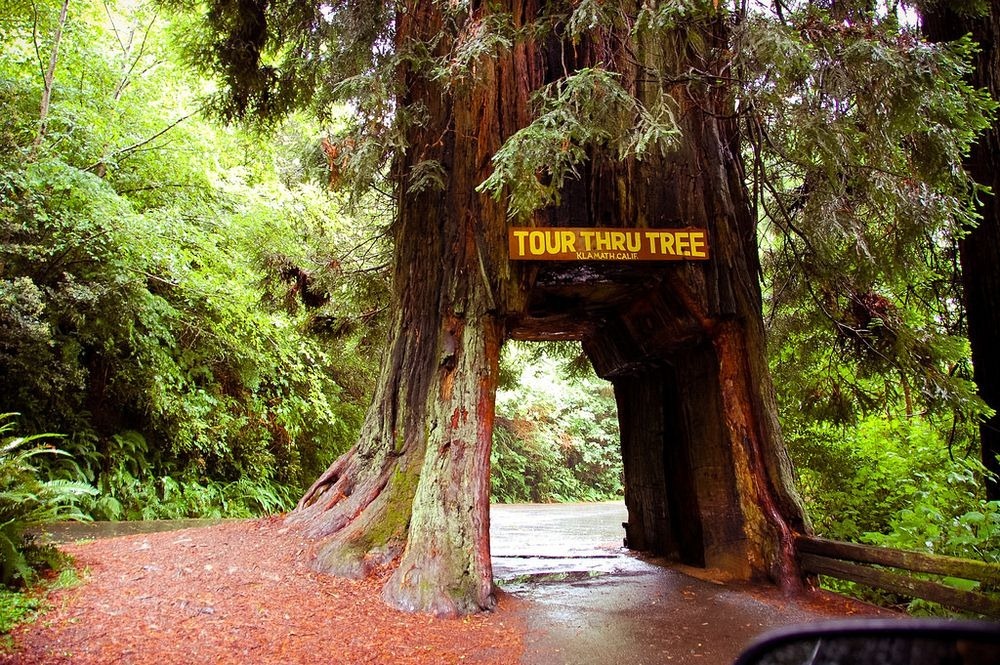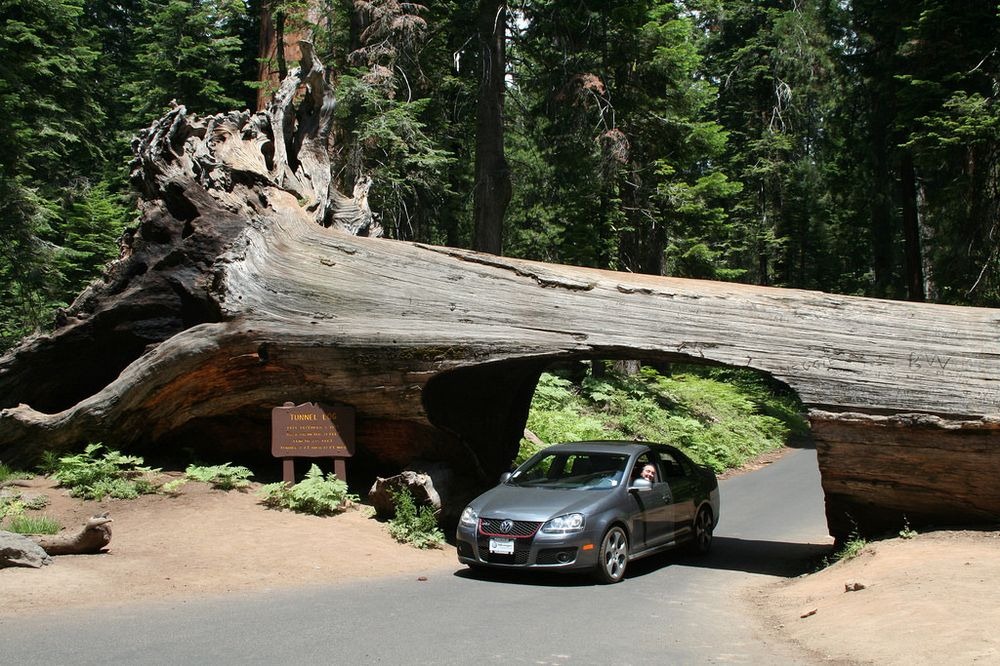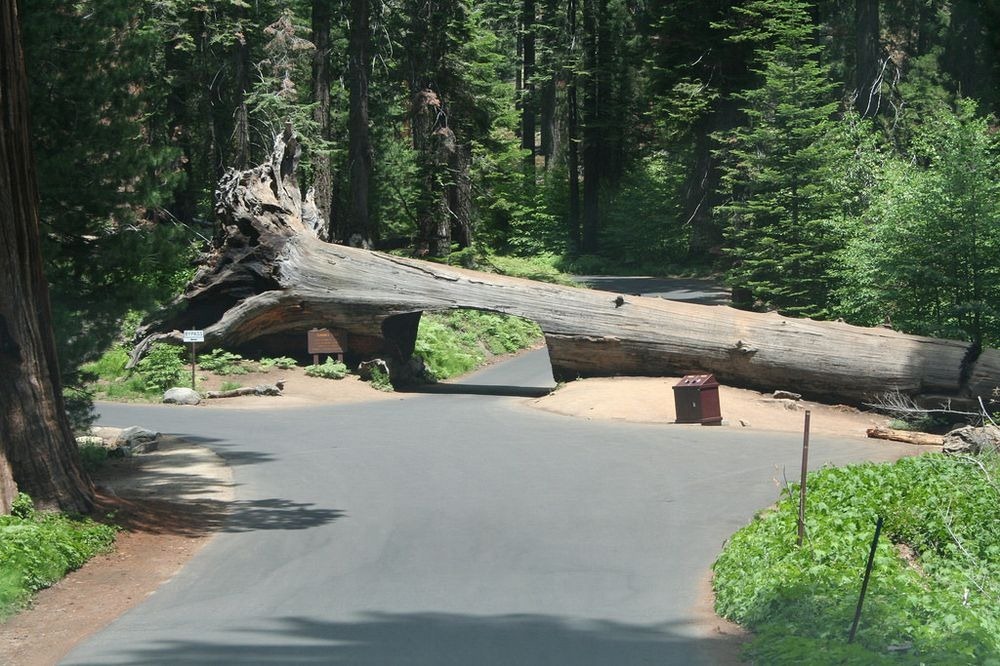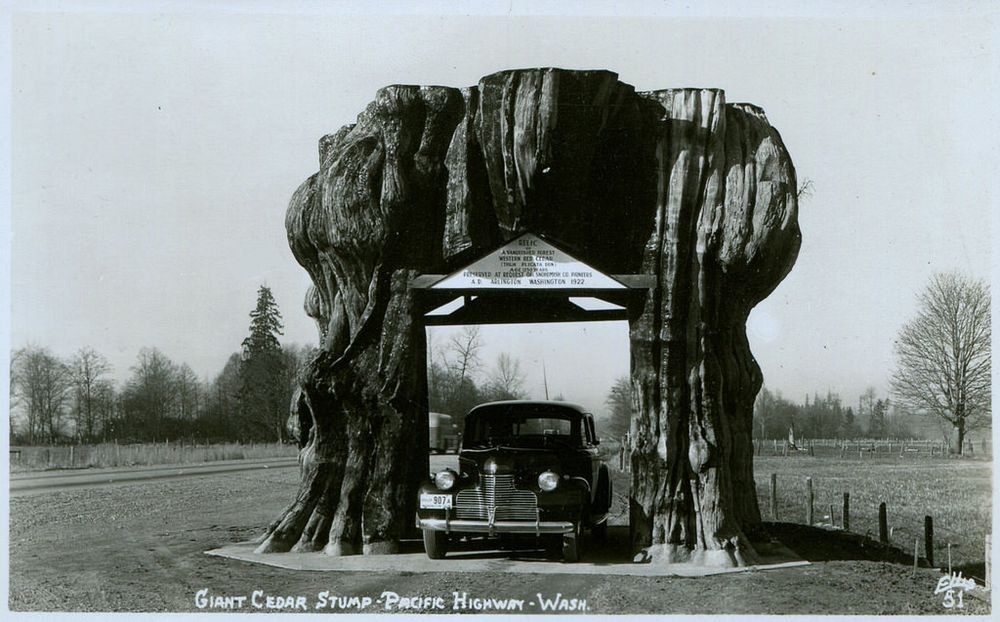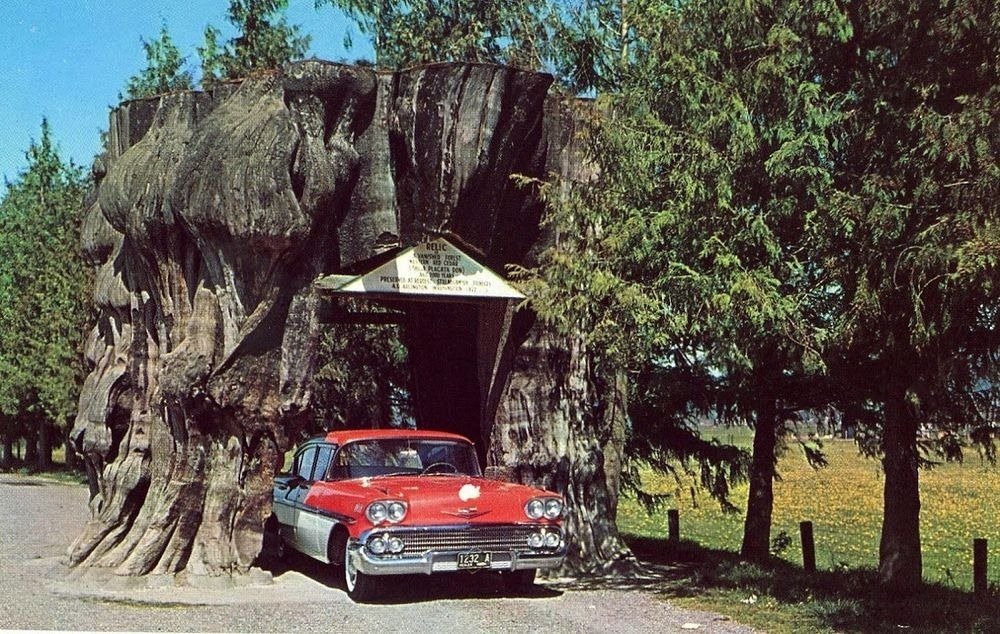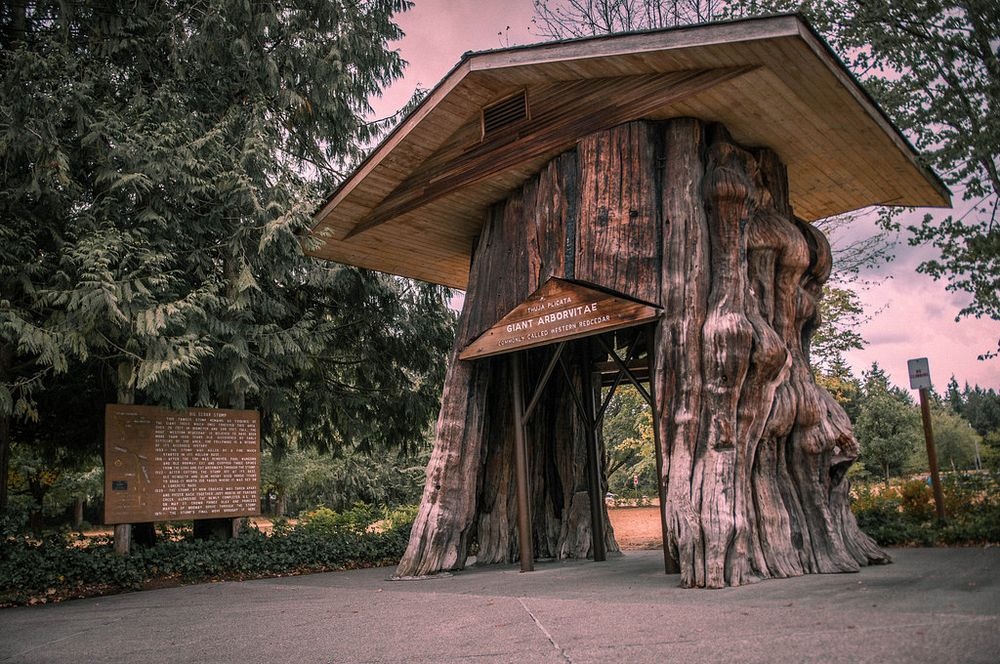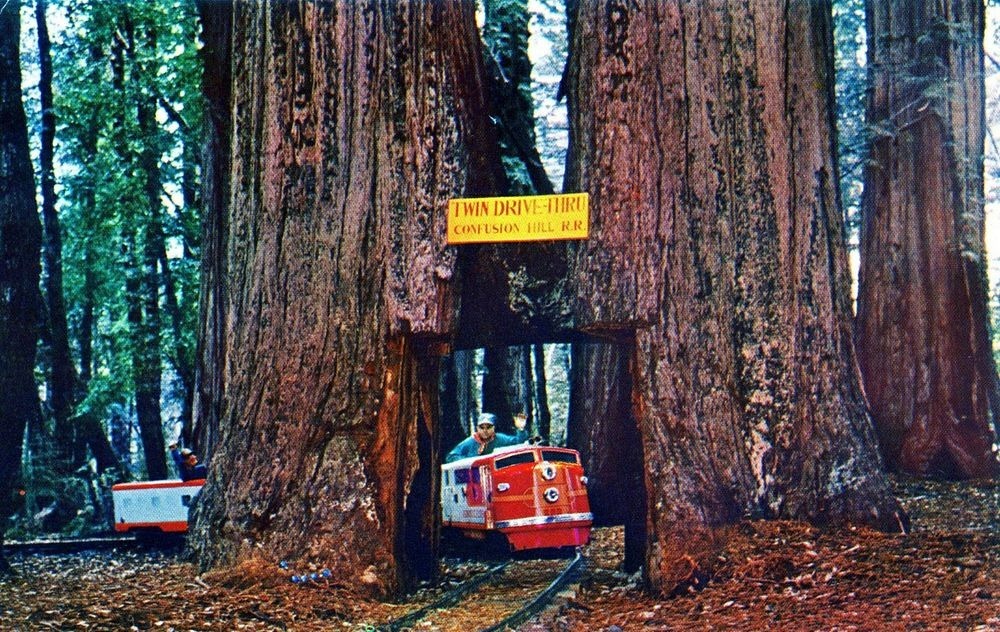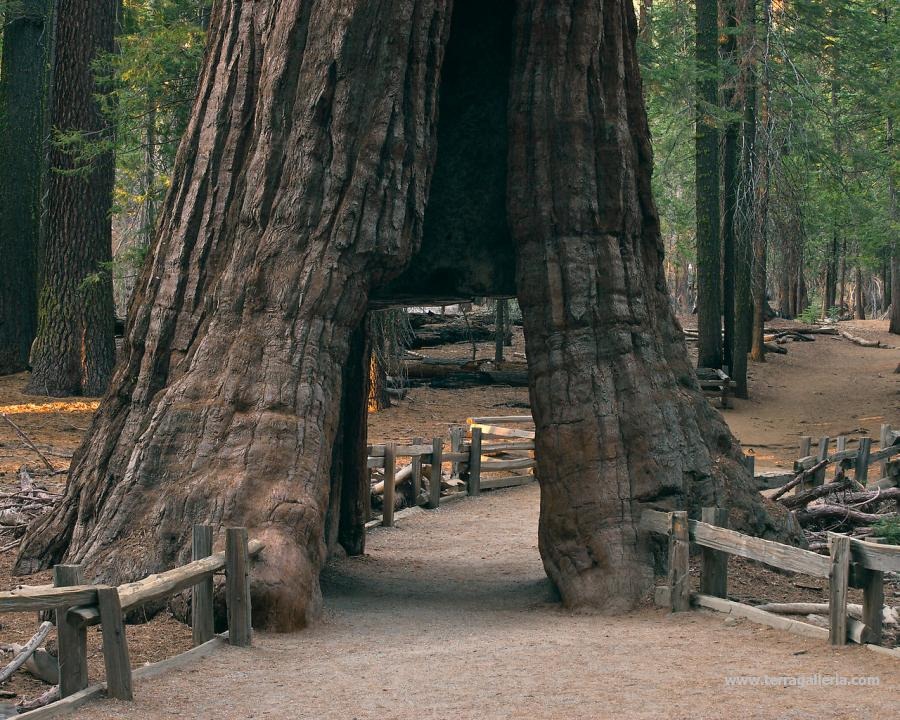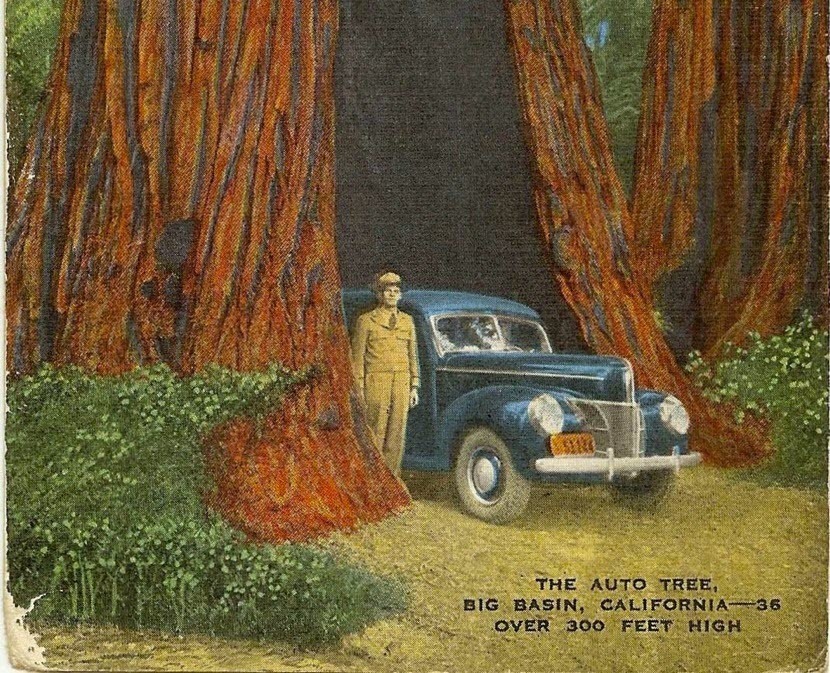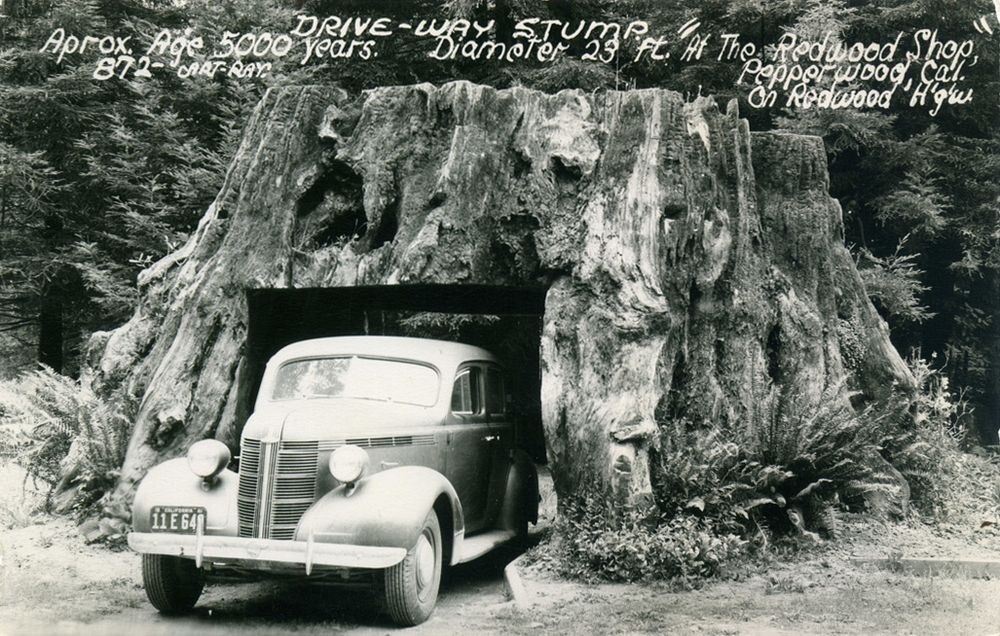The awe-inspiring grandeur of Northern California’s giant redwoods, the world’s largest trees, beckons explorers and adventurers from around the globe. These colossal giants possess trunks so immense that they could accommodate a small driveway through their massive cores. A notion that initially captured the imaginations of early park promoters, leading to the creation of drive-through tunnels that became iconic tourist attractions. While the era of carving new passages through these ancient giants has long passed, remnants of these enchanting pathways still stand, carefully preserved for future generations to marvel at.
The tree that started it all. The dead giant at Tuolumne Grove. Photo credit: faungg’s photos/Flickr
The dead giant at Tuolumne Grove. Photo credit: Mikel Ortega/Flickr
The success at Tuolumne Grove inspired other entrepreneurs to create similar attractions. In 1881, a 2,000-year-old giant sequoia called the Wawona Tree in Mariposa Grove, Yosemite National Park, was tunneled, and it became Yosemite’s most popular tourist attraction. The tree stood for 88 years, but the brutal assault on her trunk left the tree weakened and she finally collapsed in a storm in 1969. The tree had a height of 227 feet and was 26 feet in diameter at the base. The famous tunnel was 7 feet wide, 9 feet high and 26 feet long at the base. It still lies where it fell, and is now known as the Fallen Tunnel Tree.
An old postcard of the Wawona Tree from 1956. Photo credit: unknown/public domain
The Wawona Tree. Photo credit: www.shorpy.com
The Wawona Tree today. Photo credit: PunkToad/Wikimedia
The folks over at Calaveras Big Trees State Park, eager not to be left out, carved their own Pioneer Cabin Tree in the 1880s, and ended up nearly killing the tree. It now clings to life with a single branch of growth fueling the entire body. The tree still stands, but you can no longer drive through the tunnel.
Pioneer Cabin Tree. Photo credit: www.outdoorproject.com
Pioneer Cabin Tree. Photo credit: Tom Purcell/Flickr
In the Mountain Home Grove, a wealthy rancher named Jesse Hoskins purchased an eighty-acre tract of giant sequoia trees in the southern Sierra Nevada, and carved a room into the trunk of one giant tree that he named the Hercules Tree. Built between 1897 and 1902, the room is 12 feet in diameter and 9 feet in height. Hoskins added a hinged wooden door and tried living in this room, but it leaked sap, so he made it into a gift shop where he sold redwood trinkets made of wood left over from carving out the room. The tree is still standing, and the room can still be entered.
Hercules Tree. Photo credit: Mikesclark/Wikimedia
A postcard of the Hercules tree in the Mountain Home Grove, from 1902 . Photo credit: unknown
The most famous drive-through tree today is the Chandelier Drive-Thru Tree located in a privately-owned grove in Leggett, approximately 180 miles north of the San Francisco Bay Area. This 276-foot-tall coast redwood tree sports a 6-foot wide by 6-foot-9-inch high hole at its base that was carved in 1937. The name “Chandelier Tree” comes from its unique limbs hovering a 100-feet above the ground like a chandelier.
Chandelier Drive-Thru Tree. Photo credit: unknown/public domain
Chandelier Drive-Thru Tree. Photo credit: FarOutFlora/Flickr
Chandelier Drive-Thru Tree. Photo credit: J. Stephen Conn/Flickr
The Shrine Drive-Thru Tree is located in Myers Flat. Unlike the others, the angled opening of the Shrine Drive-Thru Tree formed naturally. Steel cables now securely anchor the tree to the ground.
Shrine Drive-Thru Tree. Photo credit: Hillary Hartley/Flickr
Shrine Drive-Thru Tree. Photo credit: John Hudson/Flickr
Shrine Drive-Thru Tree. Photo credit: Kirt Edblom/Flickr
The Klamath Tour Thru Tree, near Klamath, is the most recent drive-through tree, carved in 1976. The tunnel was created while taking care that critical areas of living wood was not damaged.
Klamath Tour Thru Tree. Photo credit: matt northam/Flickr
The Tunnel Log along the Crescent Meadow Road in Sequoia National Park is one of the few drive-through attraction that was created without harming the tree, because the tunnel was carved after the tree fell over. This giant sequoia fell across the Crescent Meadow Road in late 1937. The following summer, a 17 feet wide and 8 feet high tunnel was cut through the fallen log as a visitor attraction. A bypass was added for those vehicles that didn’t fit. When the giant sequoia fell, the tree stood 275 feet high and was 21 feet in diameter at the base. It was over 2,000 years old.
Tunnel Log Tree. Photo credit: Amy the Nurse/Flickr
Tunnel Log Tree. Photo credit: Amy the Nurse/Flickr
The Big Cedar Stump in Snohomish County is believed to be 1,000 years old. It has a diameter of 20 feet and was 200 feet tall. The tree was killed by a fire in 1893. The archway was cut in 1916, and a few years later, the stump was moved 150 yards from its original location and set on a concrete base. The stump changed location a number of times before it was set at its current location at I-5 Northbound Smokey Point Rest Area.
Big Cedar Stump. Photo credit: SwellMap/Flickr
Big Cedar Stump. Photo credit: Jana Robertson/Google+
Big Cedar Stump at Smokey Point Rest Stop, WA. Photo credit: Brain Williams/Flickr
The Twin Drive Thru Tree was located at Confusion Hill, in Piercy, California, and originally had a narrow gauge track laid through the tunnel. The tunnel was later closed, and it appears that the attraction has been converted into “Twin Towers Memorial Trees” dedicated to the victims of the 9/11 attack.
Twin Drive Thru Tree. Photo credit: William Bird/Flickr
The California Tunnel Tree is another tunneled tree in the Mariposa Grove. It has a narrow tunnel that cars cannot pass but allows people to walk through. Photo credit: pixdaus.com
The Auto Tree in Big Basin State Park is not a drive-through tree but visitors would often back their cars into the hollow to demonstrate the immensity of the tree. Photo credit: bouldercreekinsider.com
The Drive Way Stump was located at Redwood highway, also known as Avenue of the Giants.
Sources: Cathedral Grove / www.fs.usda.gov
